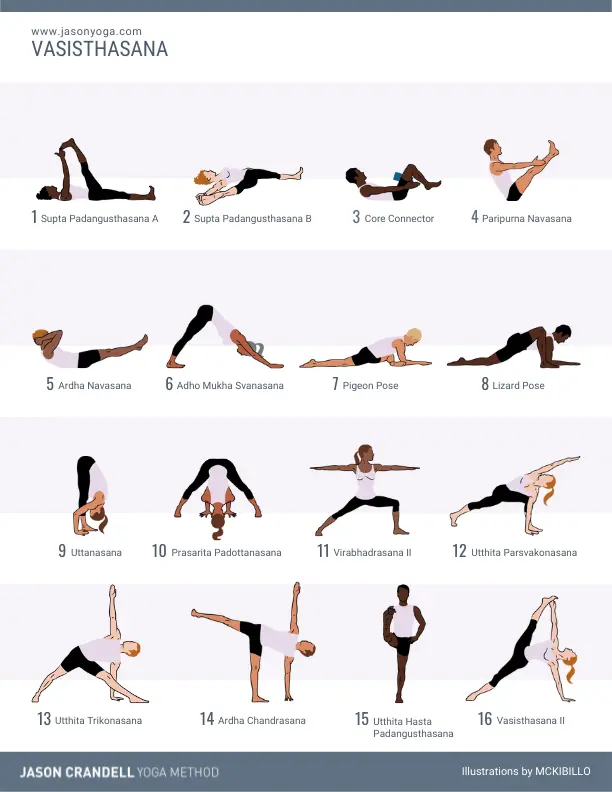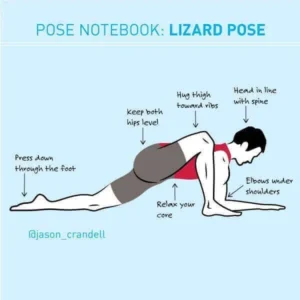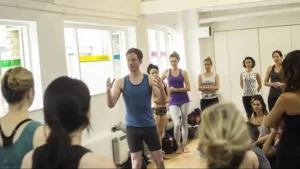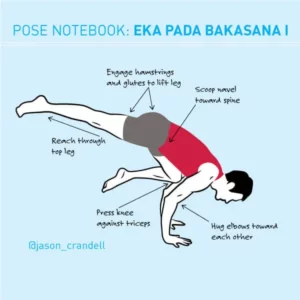In order to prepare your body for Vasisthasana, you need to open your hamstrings, adductors (inner leg muscles) and outer-hips. It’s also a good idea to awaken your core and learn how to work your shoulders safely in the posture.
Here’s a quick step-by-step guide to the peak pose sequence above:
Poses 1-2: Honestly, I love to start practice on my back—especially when I’m going to tackle demanding postures later on. Supta Padangusthasana is the perfect way to settle in, slow down, and open the hamstrings and adductors.
Poses 2-5: I don’t LOVE core work—only masochists and narcissists, do (right?). But, honestly, I can’t avoid it any longer (I’m past 40 and I’ve gotta push back a little harder than when I was 20). These three poses will strengthen your center and warm up your body in no time. They also provide an “energetic” bridge between mellowing out in Supta Padangusthasana and getting things moving in the standing poses that follow.
Poses 6-10: Down Dog warms up the shoulders, lengthens the spine, and opens the back of the legs. When I’m focusing on Vasisthasana, I emphasize broadening my scapulae, firming the outer edges of my scapulae against the ribs (by engaging my serratus anterior muscles) and externally rotating my upper arms. All of these actions are essential for Vashistasana, too. Pigeon, Gecko, Uttanasana, and Prasarita Padottanasana open the hips, hamstrings, and inner legs.
Poses 11-14: In addition to opening the legs and hips, this combination of standing poses brings attention to the back leg. The back leg in standing poses is similar to the bottom leg in Vasisthasana. It has to be strong and stable in order to support the opening of the top leg. These poses remind me to stay focused on how my entire body works together in all postures.
Pose 15: Utthita Hasta Padangusthasana is a standing version of Vasisthasana. Think of them as the same pose with different relationships to gravity. I don’t have an illustration of the leg out to the side—but, be sure to take this version of the pose as well. This is a great opportunity to stay connected to your breath as you practice balancing. It’s going to be even harder to stay connected to your breath in Vasisthasana, so you might as well get started now!
Pose 16: My hamstrings and adductors are relatively tight, so Vasisthasana is still challenging for me. It’s accessible, but it rarely feels graceful! That said, I’m always content after I’ve worked on this pose. If this variation is too much, please feel free to do the posture with your legs stacked or your top leg in Tree Pose.
I hope you enjoy this practice and make some headway in this posture. Feel free to improvise and add whatever you need to the sequence. Please let me know how it goes in the comments below!
{illustrations by MCKIBILLO}
Want more sequences by Jason?
Sign up to join our newsletter and we’ll send you our e-book:
30 Essential Home Practice Sequences.



